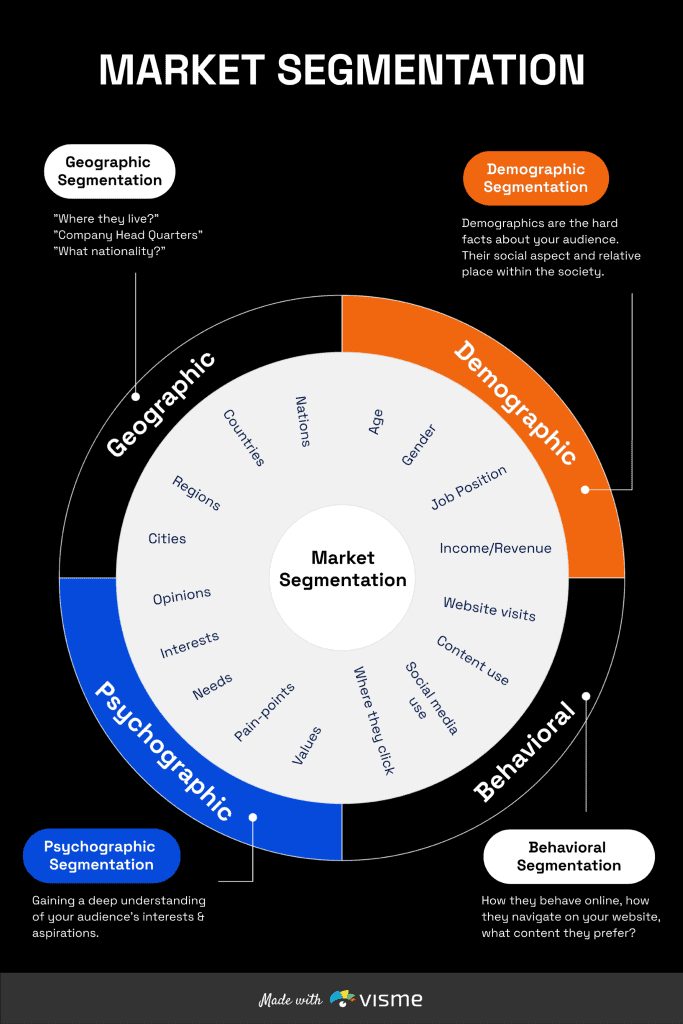Updated on January 4, 2023
Fact #1. 72% of consumers only respond to personalized marketing messages.
Fact #2. There is no such thing as personalization without lead segmentation.
Besides, if we must agree upon “the ultimate goal” that all businesses strive to achieve, that would be sales, right? Sales, Profit, Revenue, all synonyms. And what precedes sales? = Conversions.
Conversions come from leads.
A lead is an individual or business organization that has shown an interest in what you are offering. In other words, leads are those people/companies that have already discovered your brand, have demonstrated an interest in your product or service, and have the potential to become paying customers.
In general, conversion is any action or activity performed by your lead that signals they have taken a step towards converting into a customer. Every business will track different, unique actions performed by their leads, that they consider a conversion.
Conversion might be when a visitor to your website completes any desired goal, such as:
-
- Downloading an ebook on the subject of the service your SaaS company offers;
- Scheduling a demo session;
- Registering to receive your newsletters;
- Filling out a form and leaving their personal information to receive marketing materials from your brand;
or, from an e-commerce business’s point of view, conversion might be placing an item in the shopping cart. We call the percentage % of total visitors that convert – conversion rate (CVR).
To demonstrate… In the marketing department at Sales.Rocks, our most valuable website conversion is “create an account”, performed when our leads click on our favorite CTA button in the upper right corner.
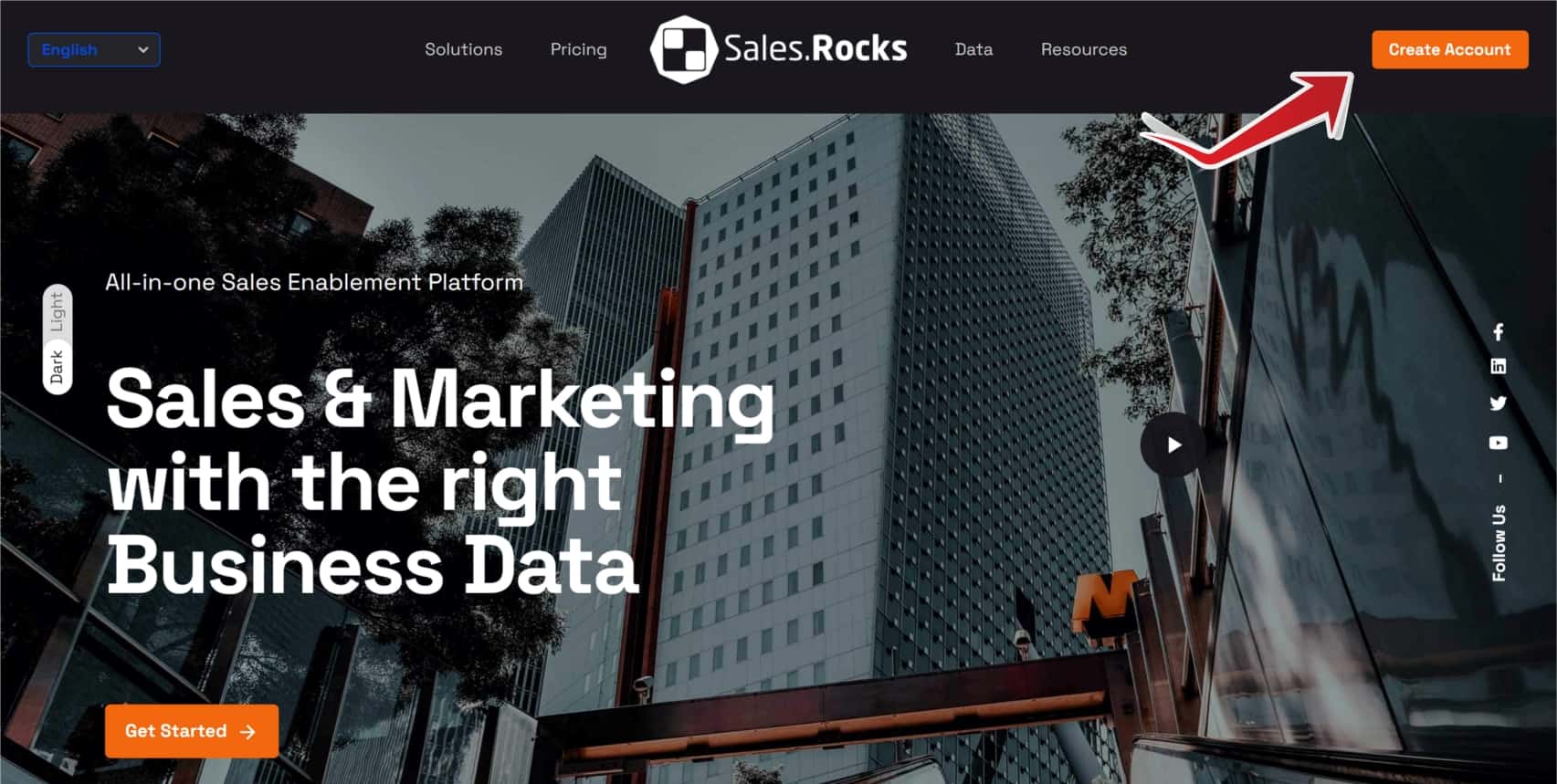
And anyone that clicks this button, and successfully creates an account (therefore has taken the final step before converting into a loyal customer) is deemed a “hot lead” 🔥.
To improve your lead conversion rate, you have to improve your lead targeting.
Let’s look at the bigger picture from a bird’s-eye view.
What is lead segmentation?
Lead segmentation is the process of dividing the leads on your list into smaller groups, depending on their mutual characteristics. Such as the interests they have in common and the actions they perform concerning your brand. This allows you to target them more meaningfully, with the information they actually care to receive. You hold their hand while they travel down the sales funnel.
Segments can be divided based on different data points and categories, depending on your set marketing and sales objectives.
Why is lead segmentation important?
Well, you can’t avoid it. Because you can’t send the same message to all your leads and expect outstanding results from your email marketing campaigns. Mass Marketing is a thing from the past. We have evolved, and technology has evolved with us. Welcome to the Future Marketing. Today, we segment leads to convert them into customers.
By curating and optimizing the content you deliver to different segments on your list, lead segmentation directly affects and improves your email campaign metrics. Segmented email campaigns have a 14.31% higher open rate than regular campaigns. And an amazing 100.95% (the two 0’s are not a typo) higher click-through rate when compared with non-segmented campaign results.
The same message won’t have the same effect on different leads. It can even have a negative result if the content doesn’t reflect the problem they are facing. Or what you are offering has no value to them. Use the data you have, to address different parts of your target market.
Here is a Lead Segmentation example
You are offering an email automation platform and your desired clients are SMB’s and large companies. You must accommodate the problems both segments face and present how your offer benefits them in different ways.
Will they use your product or service in the same way, and do they face the same issues concerning their business?
Startups and SMBs would likely want to use your service for a smaller clientele. Thus, they will not need advanced functionality and would prefer a paid plan with fewer options.
On the other hand, larger enterprises may need an all-in-one platform that offers CRM integration and email automation features. Along with competitive pricing compared to their current solutions in place. This presents an entry point that you can use to present your platform capabilities for a tailored subscription plan in exchange for a long-term client.
The above is just a short case scenario to give you an insight into how list segmentation can help you and your business target different parts of your lead base in a variety of ways. Of course, utilize the data you have.
How to segment your lead list
“Start simple. Don’t go overboard with 101 different segments. As time goes on, you can refine the segments to best meet your business needs. The better your segment your list the better you can plan your SDR activity. For example, RetunGO works on Shopify stores. But there are many other e-commerce stores that may want to use our “automated returns solutions” but are not on Shopify. Such stores are placed in a different lead segment to ensure our SDR efforts are focused and targeted. “
David Miles, CMO at ReturnGO
Start with Lead Segmentation Goal
What is the purpose of your segmentation?
Are you looking to spread the word about your product? Looking for more users? Promoting new functionality? Or are you trying to convert more paying clients?
Depending on your set targets different data points may be used to segment your leads. One more thing to pay attention to is not to go overboard with the process. Excessive segmentation can lead to diminishing returns and will cost you unnecessary time and effort spent.
Know your leads: Market Segmentation
The more you know about your potential customer the better. Every piece of data you have can help you to narrow down the correct segment to place them in. What is their job title, what company they are working for? How many employees does the company have, and any other relevant information you can use to reach out to them more effectively?
There is an incredible number of ways you can segment your leads.
“Market segmentation has consequently been regarded as one of the most critical elements in achieving successful modern marketing and customer relationship management (CRM).”
“Building Data Mining Applications for CRM”
Book by Alex Berson and Stephen Smith
There are 4 types of Market Segmentation:
- Geographic Segmentation;
- Demographic Segmentation;
- Behavioral Segmentation;
- Psychographic Segmentation.
Geographic and Demographic data segments are the hard facts about your target audience.
They are more defined and are less likely (or not at all) prone to change. These segments include your prospective customers’ socio-economic data as well: age, gender, education, what their profession is, income level, marital status, nationality, ethnicity, social class, generation, religion, where they live, what country, what city, what language they speak? They help you understand the first layer of your segment leads.
For example, Geographic segmentation is especially important when you serve customers in a particular region. Or when your broader segment leads have different preferences based on their location. You can group potential customers in the same country, but you can also sub-group them according to their nationality.
An example of geographic segmentation (+demographic segmentation)
An example of geographic segmentation would be – you want to segment your leads living in the US because they speak the same language and share the same time zone. So, your campaign will be written in English and delivered according to their time zone. So far, so good.
But additionally, you might want to sub-segment your US leads by nationality and religion. This is where you combine geographic with demographic segmentation. The US is a multiethnic state. For example, if your product is food-related, or clothes-related, you might want to separate the Muslim recipients in another segment. Offering them a promotion on your pulled pork burger or your brand’s new collection of bikinis won’t resonate with them.
Besides, if you do not take into consideration the ethnic aspect, you might deliver your campaign when the Mexicans living in the US celebrate the Day of the Dead (Hanal Pixan). This way, you risk a good percent % of the leads on your list not opening your email.
This will affect the results of the whole campaign, and you will be left wondering why low open rate or response rate. Well, that’s why email list segmentation is important.
Market segmentation based on general variables is more intuitive and easier to conduct than product-specific variables.
However, the assumption that customers with similar demographics and lifestyles will exhibit similar purchasing behavior is doubtful.
A purchase-based market segmentation methodology C.-Y. Tsai, C.-C. Chiu
Behavioral data segments are more fluid and are based on lead action and engagement.
This data tells you a lot about your gold leads.
-
- Page visit: Homepage, Product Pages, Landing Pages;
- Website visits: Frequency of visits, multiple visits, first-time visitors, regular blog readers;
- Lead source: Organic Search Traffic, PPC Traffic, Social, Email marketing;
- Lead magnet: Guide, Product Launch, Special offer;
- Email signup: Newsletter, Webinar, Blog subscription;
- Relevant content: leads show specific interest in a target category (sales, marketing);
- Freemium/ Trial: Leads show interest in the product but are not ready to buy;
- Purchase behavior and Purchase patterns: Single Purchase or First-Time Buyers, Items purchased;
The right sales tool for your sales
Sell more with Sales.Rocks
B2B Segmentation 🏢👩💼👨💼
In the B2B market, SaaS especially, we divide leads into two additional, business-specific segments. Companies that share similar characteristics, usually share similar needs. Segmenting them according to their company size, tech stack, or department… allows for allocating our finite resources (remember, time and effort are also resources!) in such a way that profit is maximized.
Lead Segmentation Based on Firmographics
If demographic segmentation is on the pedestal among the B2C marketers, Firomgraphic segmentation is the number one priority in the B2B Smarketing department.
Firmographic data is the information you have on your B2B leads, which are other businesses and the professionals working in them. Firmographics describe these businesses by giving you a more rounded picture of them to better segment them according to your objectives.
Firmographic data includes, and allows you to segment your leads by:
-
- Industry,
- Location: Head Quarters + branches around the world;
- Company size (Employee Range);
- Physical Address: Street Name and number;
- Email Address and Phone number;
- Turnover;
- Hierarchy by departments and job titles;
- Technographics (The web technologies they work on)...
Related Read: Firmographic Segmentation: Nail down your Ideal Customer Profile in B2B
Lead Segmentation based on Technographics
Technographic data is the information you have on your B2B leads about their tech stack = the web technologies they are using to do business. To work. They give you a picture of your prospecting companies digital footprint.
Technographic data includes:
-
- Monthly Tech spending;
- Sales and Marketing Stack;
- Content Management System (WordPress);
- Programming Language (JavaScript);
- Hosting Provider;
- Email Service Provider (AdWeb / Yahoo / Gmail);
- The CRM they use;
- The Sales and Marketing Automation tools they use, etc.
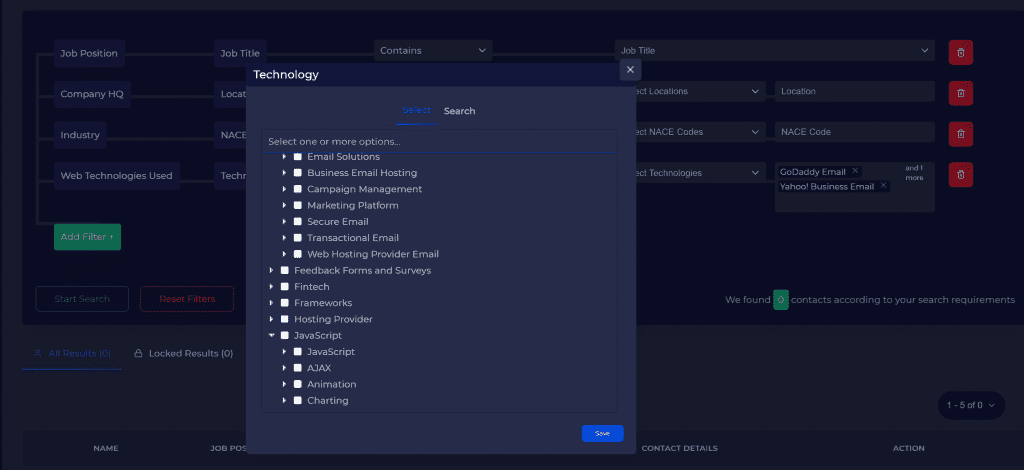
“At Sales.Rocks we use technographics and hyper-personalization with dynamic content that result in increasing the click-through rate by more than 180%. Moreover, we combine technographics and ICP to allow the identification of pain points for more granular targeting.“
– Carsten Broich, Founder and CEO at Sales.Rocks
Example of Technographic segmentation here: Technographics As The Game Changer In The SaaS World
Now you might be thinking about “where are you gonna find all this information about your customers and collect it in one place“? What is the best way to pull this off, to collect all this data and build a lead list so that you can better segment your leads and improve your targeting and your communication with them? Luckily, there is an abundance of sources from which you can extract this data from. Actually, we wrote exactly about that, if you are interested to know more. Here it is.
Related read: The Best Lead Sources You Will Need to Build Your List.
Lead Segmentation by Sales Funnel:
From Cold Leads to Gold Leads🥇
B2B leads are notorious at changing segments as they travel the sales funnel. This means = you will have to follow their buyer journey and adjust the content and messaging accordingly. This is especially evident in SaaS companies = The Quality of Leads will change as they go further down the SaaS sales funnel.
If a lead was a freemium user and now is ready to subscribe to your service, you have to adapt to reflect their new state. Now, they are a High-Grade lead. That can mean a promotional offer if they were hesitant and did not subscribe immediately or sending a case study to help them make the final step.
Additionally, the importance of each prospective customer should also be different based on their contribution to the profit for your business. Why not include the profitability of each customer segment when evaluating their similarity in purchase behavior?
Here is another real-life example of B2B Lead Segmentation:
“Lead segmentation is where the real magic happens.
Actually, it is your sales funnel that should help you segment your leads.
We do lead segmentation using a “Lead generation quiz” with re-targeting followups. And we provide value within the quiz itself by the questions we ask.
Ask relevant and open-ended questions. Make your leads think and “see” from their business perspective as they go through the quiz. Then watch them get more engaged and inclined to continue the quiz, as your CvR improves.
Place your Quiz where it will reach the right audience.
We use the UPSYD Framework:
1: Unaware. 2: Problem Aware. 3: Solution Aware. 4: Your-Solution Aware. 5: Deal.
Thanks to Sales Funnel Lead Segmentation, we know Where & When to present different quizzes for each lead segment. Of course, depending on which USPDY stage they are currently. That’s how we guide our lead segments towards the bottom line.“
Dimitris Tsapis, Head of Marketing at PlanM8
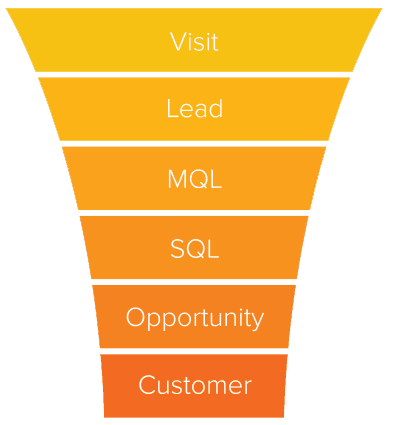
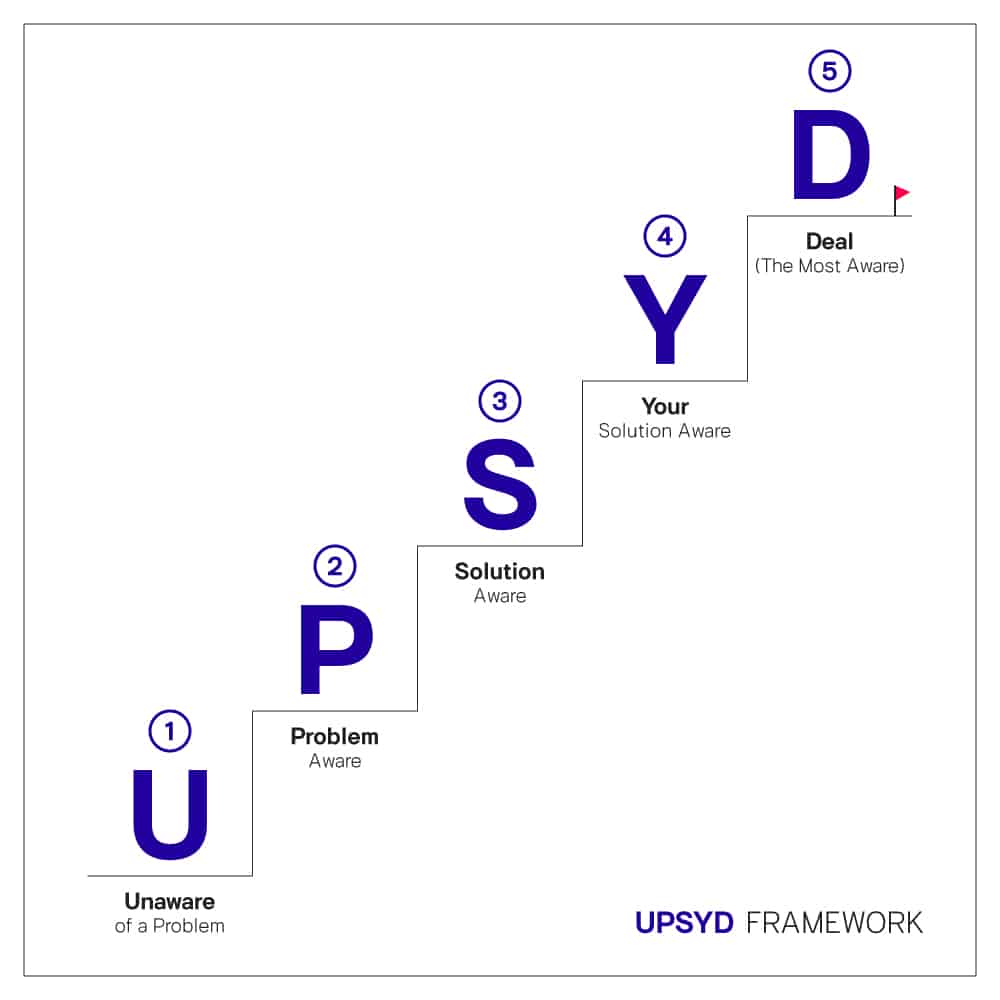
Create an email drip campaign for each segment
Since you’ve already carefully divided your leads according to your end goal, now it’s time to create the content and set up email sequences for each segment. Optimize the content to cater to each specific group so you can achieve the best results. When possible, it is best to repurpose existing content.
Best ways to segment your leads
You can segment your leads in any way you want based on a common data point they share, but it is usually best to do so based on multiple data points for more accurate targeting.
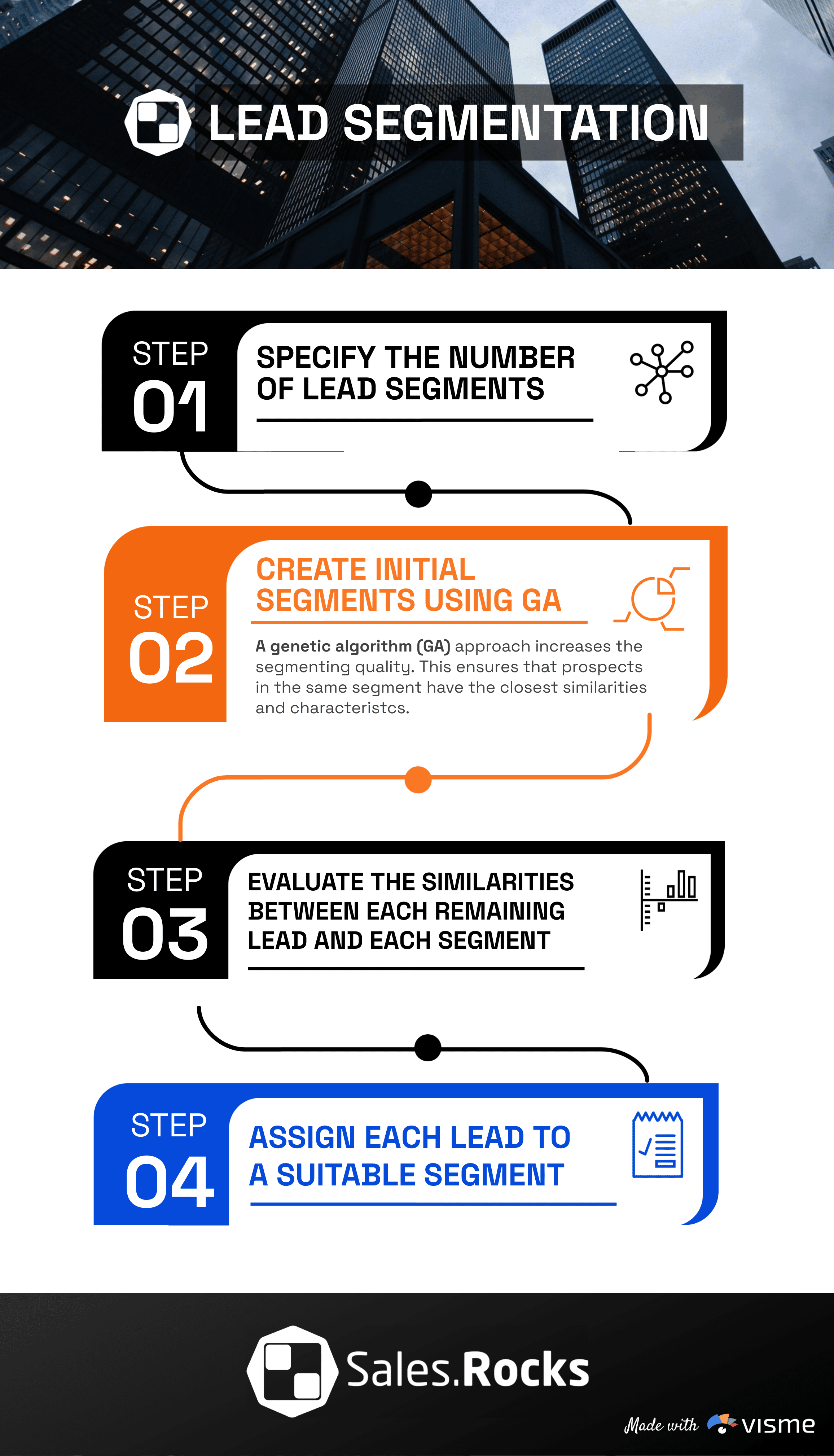
Geography (city, country, region)
An important data segment for targeting a specific region. This data allows you to target leads in companies in a specific city, country, and region. For possible recruitment or breaking through in a new market, possibly with a large part of it dominated by a local service or product.
Demographic (age, gender)
Different age groups favor different approaches in terms of content and outreach. While the older generation prefers a more professional and colder approach with statistics and data, the younger generation likes a warmer message from a story-like perspective when reached out to.
Another interesting stat on the topic of gender is that women pay more attention, 2 times more so in fact than men, making them a better target group for a marketing outreach campaign.
Buyer behavior (history, cycle)
Smaller companies usually go for a paid test period to try your product. They are very cost-effective and prefer to subscribe monthly. While larger companies prefer the shortest trial. They quickly commit to a long-term subscription & a more expensive plan since they prefer the constant support and use the feature set to its potential.
This is an opportunity to engage the smaller companies with content meant to help them optimize their usage. Also, convince them to subscribe to a long-term plan. The larger companies offer an extended support plan.
A buyer persona (job title, position, organization, industry)
No two leads are the same. Depending on their job title a marketing manager working for a digital marketing agency may be interested in your product as well as a sales representative working for an enterprise. But both have different needs and face different pain points. In addition, one can have buying power while the other needs to present your service to a team lead. Tailor your message as much as possible to address both of their scenarios.
Website behavior (visits, content)
Visitors to your website have visited one of your product pages several times and check out your pricing page as well. While another is reading an article on your blog on the topic of sales. Sending an email with a case study and product functionality to the first leads and similar content concerning sales to the other leads would be a great way to start the engagement process.
Email signup (CTA behavior)
You sent out your emails to several segments and now it’s time to analyze your open rate and click-through rate. If your open rate is good but not many leads clicked on the CTA button in the message you need to find out why. Make sure the content in your message is relevant and the action you want the recipient to take clear and focused. It is important to note that some respond more to a FOMO (Fear of Missing Out) wording that presents a sense of urgency and appears as it requires immediate action.
Conclusion
Now you know why segmentation is important for your lead list, why you should use it and how to implement it in your business plan. By using a segmentation strategy, the quality and value of your leads will grow and directly affect your metrics positively.
Being able to better address their needs through more relevant messaging, improves your engagement process and increases your chances of achieving your target goals and ultimately benefiting your ROI.
Improve your selling skills
Join the Sales.Rocks Sales Academy
Contributing Writer:

Ivana
SEO Padawan at Sales.Rocks / Shakespeare’s devotee! 🤓



